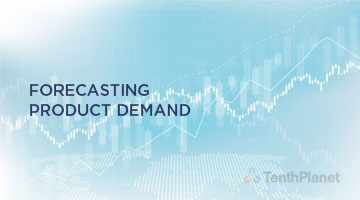Forecasting Product Demand

Introduction
Demand forecasting is the process of estimating the probable demand for a product or service in the future. It requires historical sales data as well as statistical techniques.
It is an essential component of the supply chain and influences key decisions related to budgeting, financial planning, sales & marketing, raw material, production planning and risk assessment. Here are some of the advantages of demand forecasting :
- Better capacity utilisation and allocation of resources
- Optimisation of inventory levels
- Improved distribution planning and logistics
- Product life cycle management
Demand forecasting involves the following steps:
Identification of objectives:
The objective must be specified with respect to long-term or short-term demand, market size, overall product demand, overall market share, etc.
Determining the forecast period:
The forecast period can either be short-term or long-term.
Selecting a proper forecasting method:
Generally, there are two approaches for forecasting demand. The first approach involves forecasting demand by collecting information regarding the buying behaviour of consumers from experts or by conducting surveys (SURVEY METHODS). The second approach involves the use of statistical techniques to forecast demand (STATISTICAL METHODS).

Data collection & manipulation:
The next step is to collect the required data. If the data is collected from a new source and does not bear any resemblance to existing data, it is called primary data, while data that is already available is known as secondary data. Often, the data collected may not fulfil our requirements completely. Hence, it is essential to manipulate or modify the data.
Interpretation of results:
The results are interpreted and conveyed in an understandable format.
Conclusion
Demand forecasting plays a crucial role in strategic planning of business activities like expansion, financial planning, budgeting and risk assessment. Assumptions regarding turnover, profit margins, cash flow etc. can also be made. Demand forecasting also helps optimise inventory levels and capacity utilisation as well as improve distribution, logistics and customer outreach.
